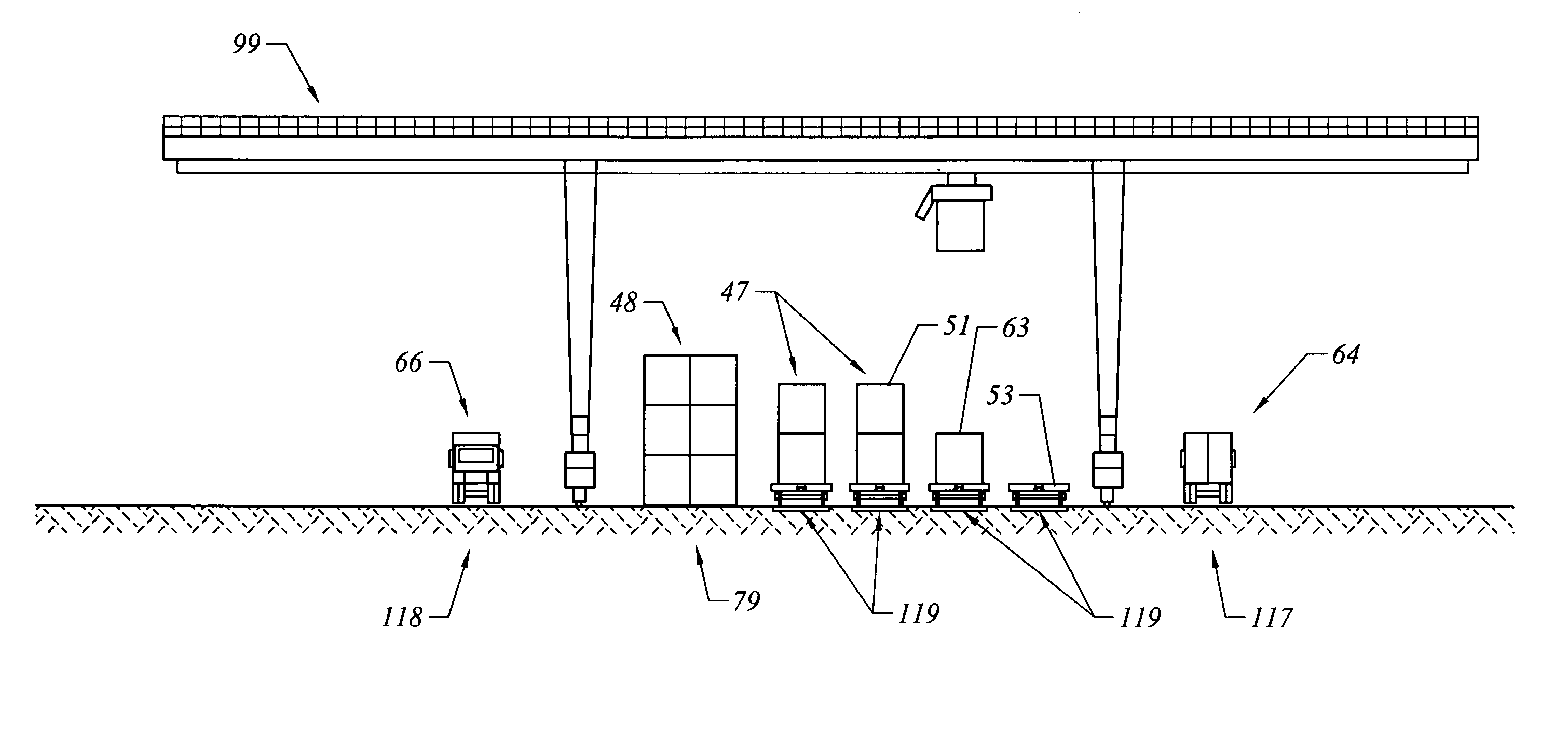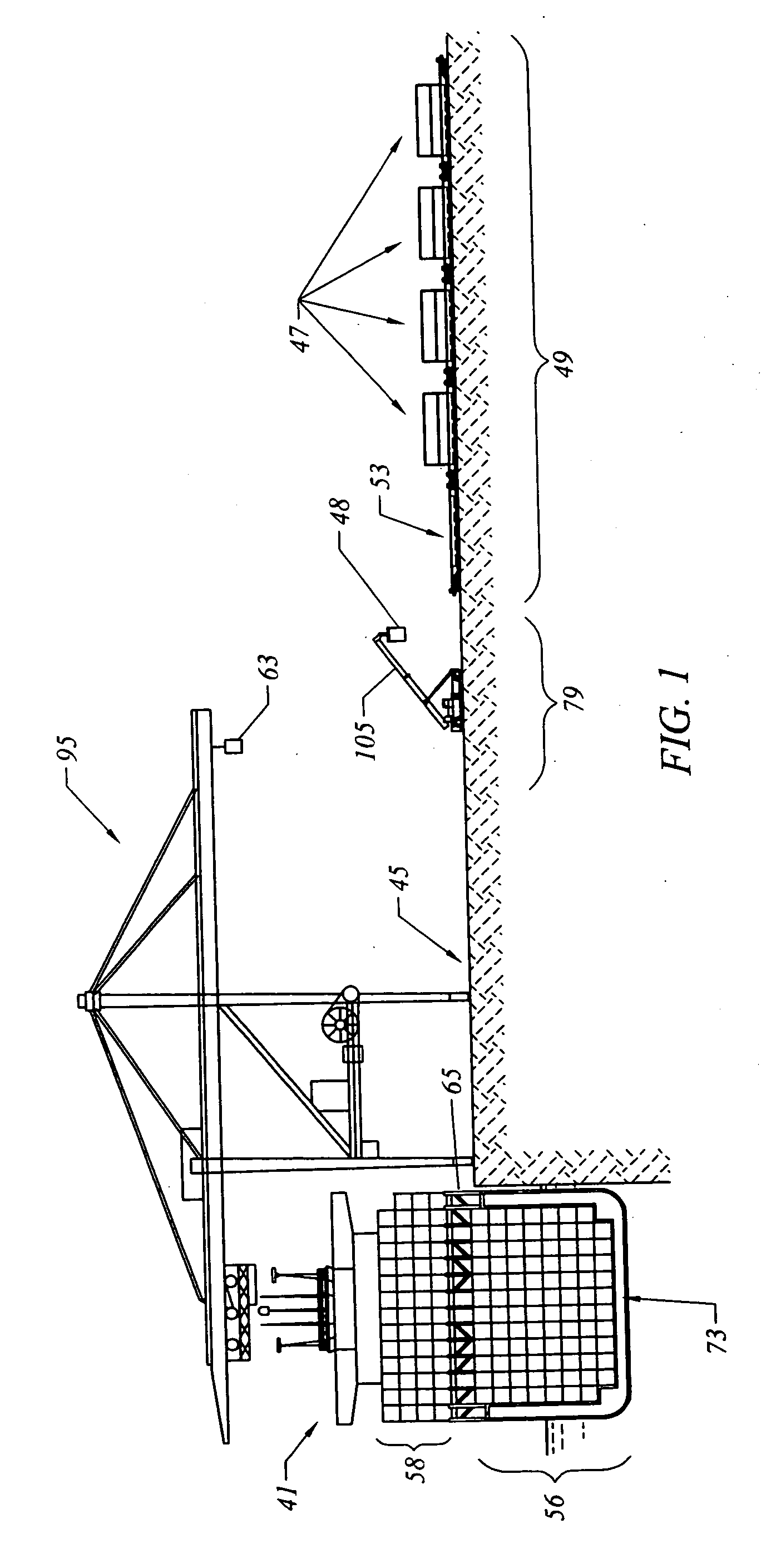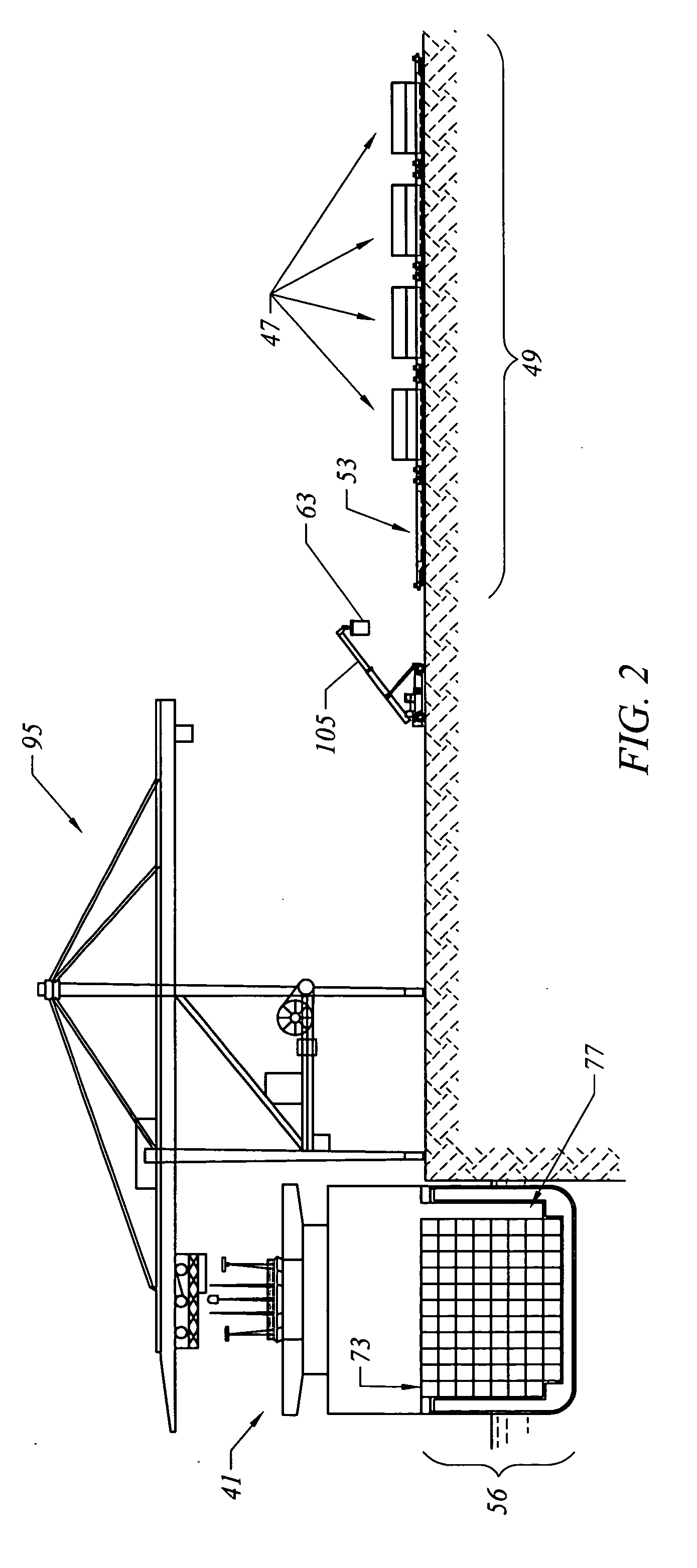Buffered magazine method and system for loading and unloading ships
- Summary
- Abstract
- Description
- Claims
- Application Information
AI Technical Summary
Benefits of technology
Problems solved by technology
Method used
Image
Examples
Embodiment Construction
[0085] In FIG. 1, consider the following example of the above operation. At the start of operations, a container ship 41 arrives full of import cargo, including containers 58 stored in the on-deck stow and containers 56 stored in the below deck stow. There are some export containers 47, 48 on well cars 49.
[0086] The on-deck stow 58 is cleared with the crane 95, onto the pier 45. Each container 63 is picked up by the mobile lift 97, 105 from the pier 45 and transported to the rail magazine 121, where it is placed in a well car 49, 53. Meanwhile, export containers 47, 48 are removed from the well car 49 and placed in the ITZ 79. This process is repeated until the on-deck stow 58 is clear, hatch covers 65 have been removed, below deck containers 56 have been removed, and there is a cleared vertical cell 77. The containers that were in the on-deck stow 58 of the container ship 41 are now on the well cars 49. The export containers that were on the well cars 49 are now in the ITZ 79 or s...
PUM
 Login to View More
Login to View More Abstract
Description
Claims
Application Information
 Login to View More
Login to View More - R&D
- Intellectual Property
- Life Sciences
- Materials
- Tech Scout
- Unparalleled Data Quality
- Higher Quality Content
- 60% Fewer Hallucinations
Browse by: Latest US Patents, China's latest patents, Technical Efficacy Thesaurus, Application Domain, Technology Topic, Popular Technical Reports.
© 2025 PatSnap. All rights reserved.Legal|Privacy policy|Modern Slavery Act Transparency Statement|Sitemap|About US| Contact US: help@patsnap.com



